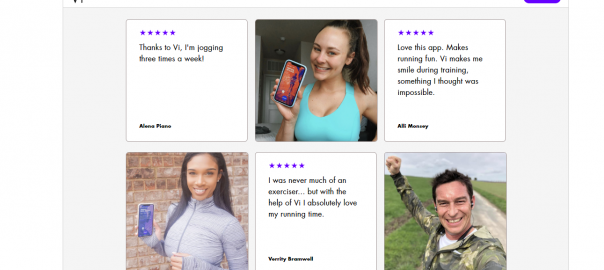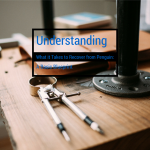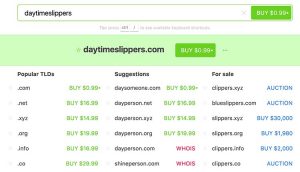Ever seen an ad campaign that makes you feel like the brand picked the thoughts right off your brain? Or perhaps, an online order that fits perfectly—made for you.
Scenarios like these will make you more endeared to the brand because you feel they understand your needs and personality, right?
I’m guessing your answer is yes.
And here’s why:
E-commerce personalization isn’t just a marketing buzzword. It’s become a norm for brands to tailor their products and services to customers’ needs and aspirations. This technique has not only increased their ROI but also fast-tracked customer retention.
According to Deloitte, 80% of customers prefer to patronize brands that offer personalized experiences. Similarly, 90% of customers are drawn to brands with adverts that resonate with them.
For a clearer picture, this article explores five examples of successful hyper-personalization that worked.
Ready to find out? Let’s read along.
How Hyper-Personalization Can Turbocharge Your Brand’s ROI and Marketing Spend
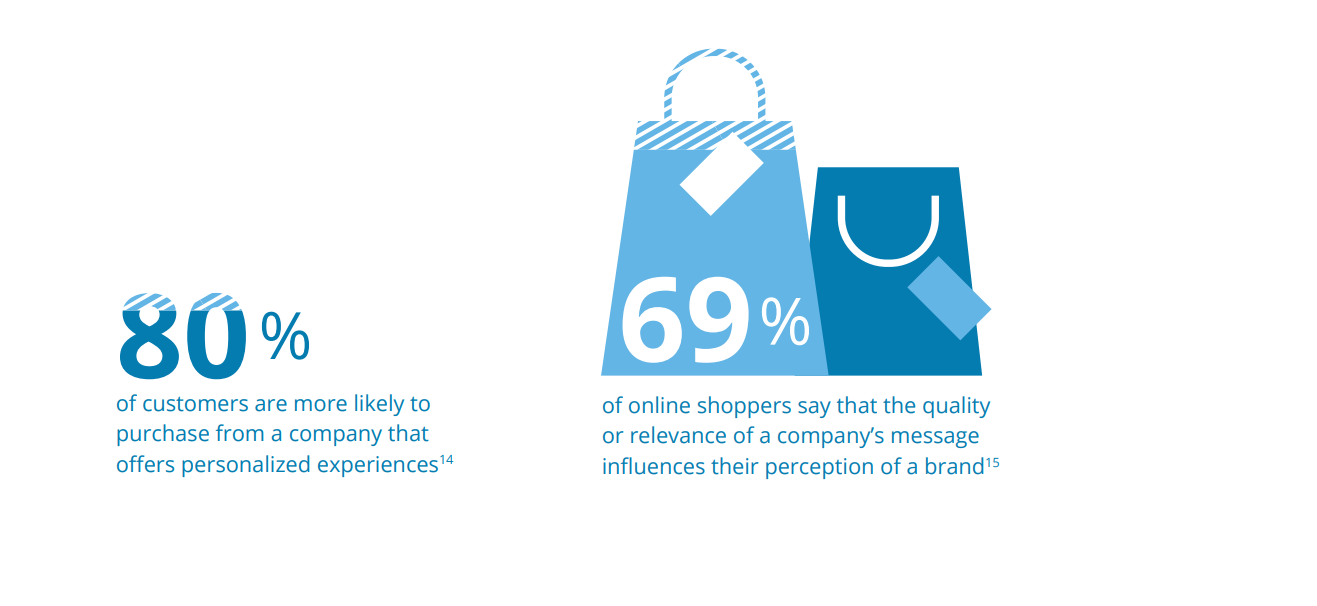
Eight in ten buyers prefer businesses that offer personalized experiences. In addition, relevance influenced 69% of buyers’ brand perception via Deloitte.
As cliche as it sounds, hyper-personalization is the new normal for brands who hope to engage their audience and gain loyalty.
However, there is no straight formula to hyper-personalization.
For example, it could be offering niche personalization services. Think of freelancer web hosting solutions as outlined on HostScore, security for website users like ClickSSL’s solutions, or Naked Wine’s exclusive wine recommendations.
Whatever the case, the ultimate goal is to create more offerings that resonate with your audience.
According to Deloitte’s study, hyper-personalization can boost your ROI and marketing spend by 80%. And it can also increase your brand sales by 10%.
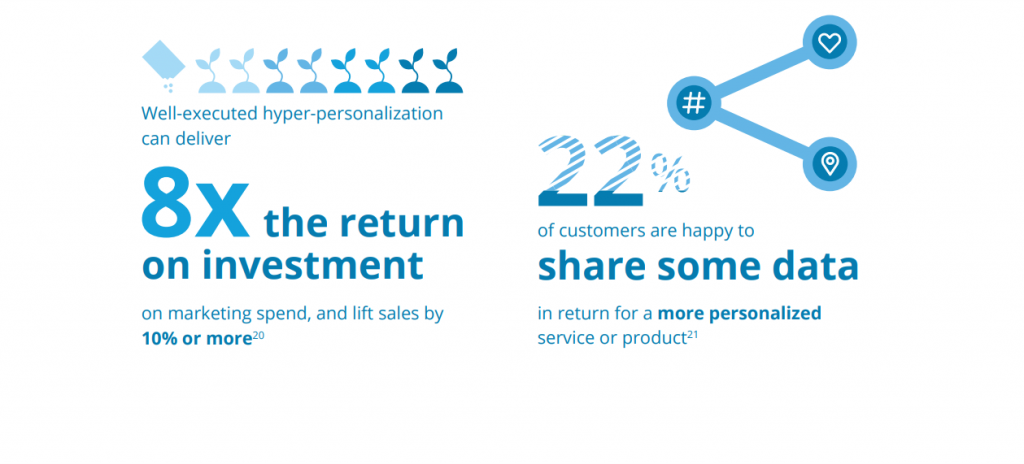
Hyper-personalization can deliver up to 800% ROI. Notably, one in five customers would share their data to receive more personalized experiences via Deloitte.
However, Creating personalized experiences is not as easy as it sounds. To this effect, brands combine Artificial Intelligence, machine learning, and the power of data to bridge competitive advantage and produce offerings that are relevant to their audience.
Some companies have used personalization to amass profits and successes. Some others have taken personalization to the next level, providing highly relevant and personalized customer experiences. And have avoided the extra cost of hiring an IT consultant.
These brands check all the boxes to meet their customers’ needs and even more.
For them, there is more to personalization than calling customers by name or sending birthday wishes. Instead, they create a complete customer-centric experience for each consumer.
I bet you’ll have a lot to learn from these brands.
#1: Stitch Fix Uses AI and Data to Create the Perfect Wardrobe for Over 3.4M Customers
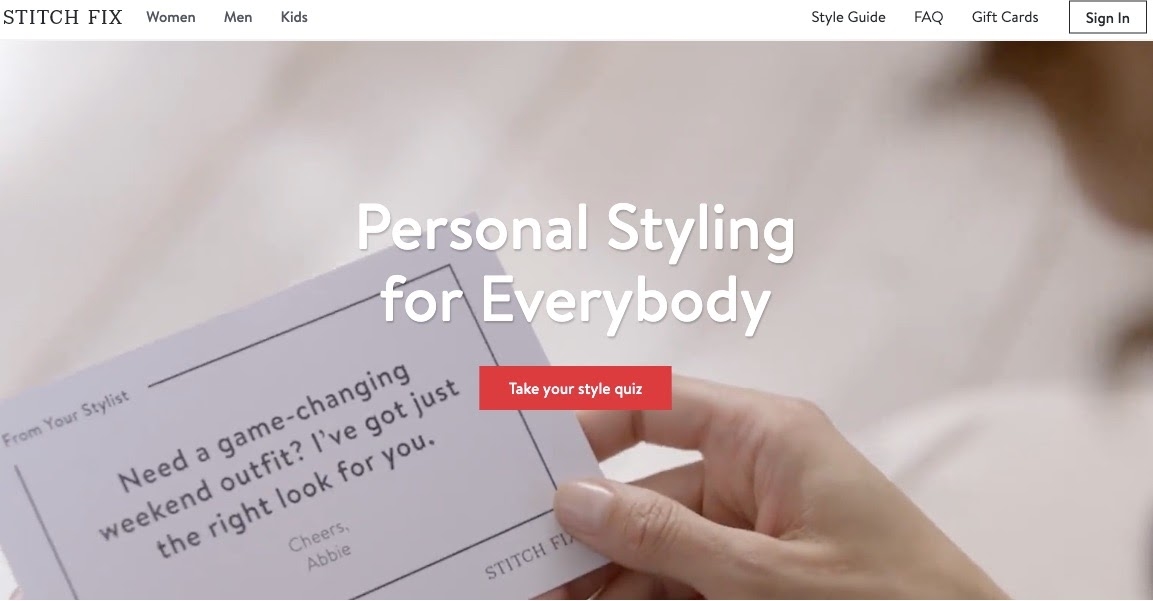
Stitch Fix caters to the styling needs of individual customers for each shopping event that happens with them. Via Stitch Fix.
Stitch Fix relies on AI and data to improve consumers’ buying experience. They have a unique marketing model:
Leverage AI to pick clothing items for their customers and mail them the selection.
Stitch Fix sends you a well-packaged fix based on your customer data—a box of selected clothing or accessories; you then pay for your most preferred selection and return the rest.
Stitch Fix creates the perfect clothing or accessory for each customer, using their sizes, price range, and taste. In addition to that, they offer a free exchange, delivery, and returns to incentivize their customers.
Let’s see how this model has helped them build traction.
How It works
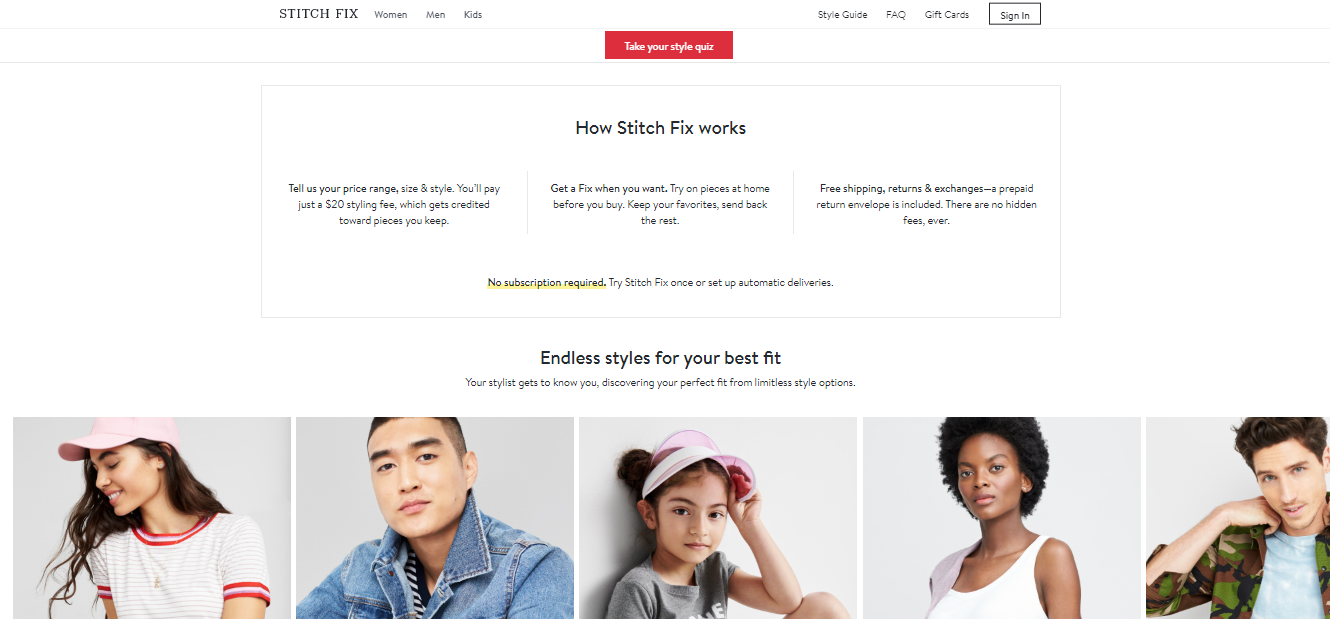
Stitch Fix in 3 steps: customers fill in their data, Stitch Fix sends them a fix based on the data, they choose and return the rest. Via Stitch Fix.
Stitch Fix gathers data from multiple sources. During signup, the company collects customer data, including
- Price range,
- Size,
- Style preferences, and more.
Stitch Fix also collects data on buyer personas using:
- Surveys,
- Social media,
- Questionnaires,
- Pictures and other channels.
With these details, they can tailor their products and services according to customers’ needs.
In addition to that, Stitch Fix also improves its personalization process by asking for customer feedback and suggestions on the returned items. With that, they have achieved more success and also enhanced customer experience.
The company then uses the collected data to:
- Understand customer’s preferences
- Offer selections with fewer returns in the future.
Following every purchase or return, the company sends surveys to customers for feedback. With that, the company can identify opportunities to improve personalization experiences. On the other hand, Stitch Fix’s customers are willing to provide feedback because they enjoy their shopping experiences.
The company also works with professional stylists and expert data analysts to analyze customer data and produce recommendations.
Stitch Fix Results and Why It Works
Stitch Fix leveraged data from Google Forms and Survey Monkey to gather accurate customer data and has amassed massive success with hyper-personalization for a company that started without a website.
Stitch Fix gained 2.2 million customers in July 2017 and was already enjoying a 103% CAGR in 2014. They have made over $ 1 billion in sales, and their customer base has grown over 3.4 million as of 2020.
The fashion brand has automated its critical processes, from data inventory to customer feedback. By combining the power of data and artificial intelligence with human experience and preferences, Stitch Fix
- Meets customers’ needs
- Turbocharged conversion rates, and
- Increased customer retention
Look at the brand’s competitive analysis:
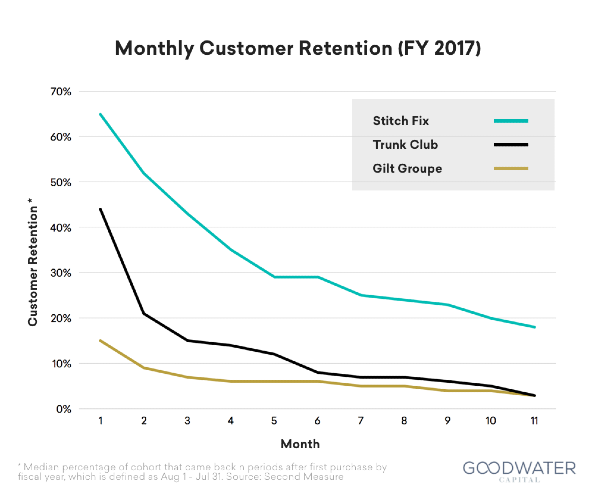
Stitch Fix has better customer retention than its competitors, Trunk Club and Gilt Groupe. Via Goodwater Thesis.
The company measured a high customer retention rate of 30% within its first six months. The analysis above depicts a higher customer lifetime value as against other competitors in that niche.
Lessons and Takeaway
Stitch Fix’s customers provide more than 85 data points on their profiles. From this model, businesses that hope to take advantage of personalization should
- Gather as much data from multiple sources.
- Employ experts to help you analyze data.
- Work with experts to make good use of the data you collect.
Using customer data, Stitch Fix’s data experts analyze data to make informed decisions, while the stylists produce stunning designs and stylistic decision
#2 WES Uses Personalized Digital Badges to Create Publicly Verifiable Credentials
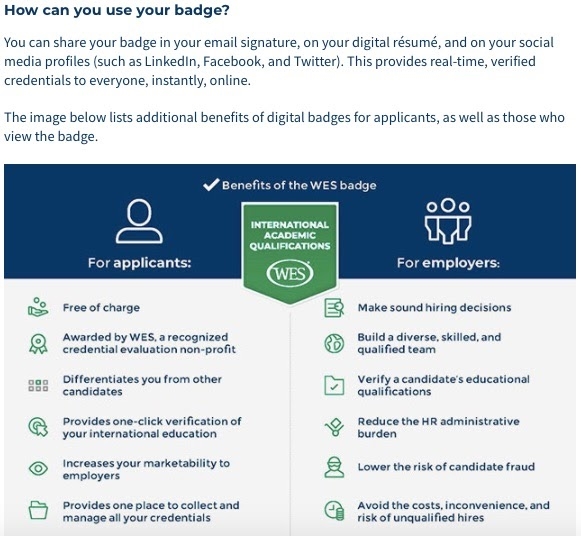
WES highlights the benefits of its digital badge for both employers and individual users. Via WES.
World Education Service (WES) provides credential evaluation and verification badges for its users. The WES badge affirms that WES has evaluated and confirmed your educational qualifications. It also demonstrates institutional recognition for the awarded certificates.
Clients can add WES digital badges to email signatures, digital resumes, and social profiles instantly.
Who Needs This Type of Hyper-Personalization?
This personalization idea can be used by businesses that provide awards, authentication, recognition, or verification services. For instance:
- Academic evaluation organizations like WES, ICES, NAFSA, and others
- Review sites like Capterra, GetApp, or G2
- Organizations that offer courses or training services like Udemy and Coursera,
- Industry certifications like Google or Hubspot certifications.
- Database companies like Crunchbase, Glassdoor, AngelList, Owler, etc., and,
- Professional certifications like CCNA, PMP, SHRM, etc.
Any business or institution that issues awards or recognitions can use this hyper-personalization idea to drive sales and customer engagement.
WES Results and Why It Works

WES evaluates professional credentials. It verifies academic and professional qualifications for its users in North American institutions via WES.
WES hyper-personalized digital badges drive value for businesses and individual users. Verifying this claim, Kunle Ifesanya also confirmed that WES credential evaluations helped him reach his professional goals.
Businesses can showcase digital badges on social profiles to motivate professionals and customers to develop vital skills or upgrade their expertise to meet dynamic industry demands.
An IBM report also reveals that the sales and downloads of digital badges increased in an online training site by 64%.
Lessons and Takeaway
With personalized digital badges, users can:
- Make verifiable claims of their educational and professional qualifications,
- Drive brand awareness,
- Earn extra brand authority when other verifiable brands feature your digital badge
In addition, businesses and professionals can also use digital badges to:
- Beat impersonation
- Gain trust and loyalty from the brand’s audience
- Drive organic traffic to their landing pages
- Gain the perfect first impression with the email signatures.
Businesses can use signature editors from MySignature, Xink, or Opensense to ensure consistency across the company’s email signatures.
#3. Naked Wine Uses Hyper-Personalization for Exclusive Wine Recommendations
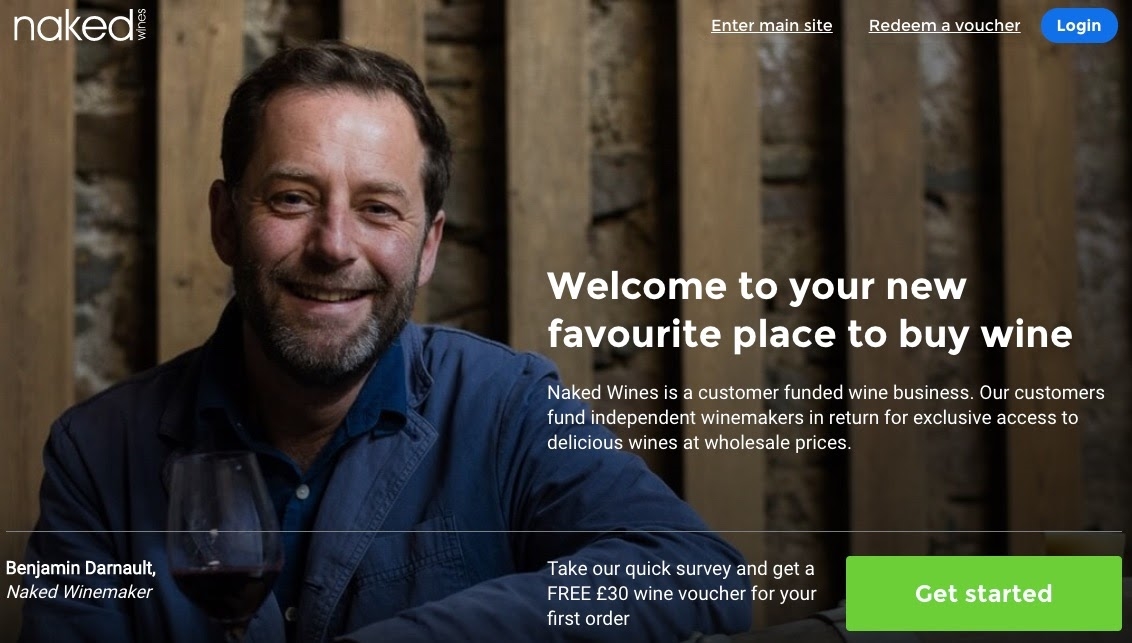
Naked Wine brings buyers and winemakers together with hyper-personalization. They create unique and personalized experiences for each buyer via Naked Wine.
Naked Wine is an online wine community and e-commerce store that employs hyper-personalization to drive sales and increase customer retention.
The brand provides a platform that supports a curated collection of premium wines made by independent winemakers.
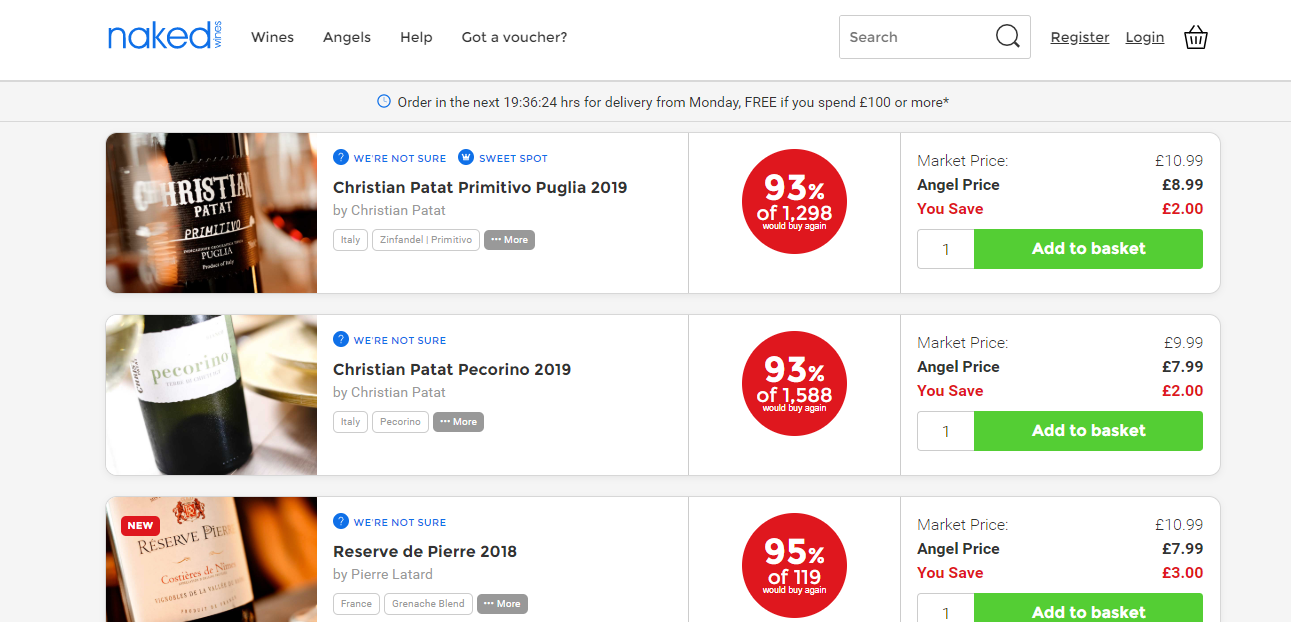
Naked Wine shows customers wines they’ve bought and encourages them to leave their reviews via Naked Wine.
On top of that, they have partners called Angels who fund wine projects. In return, they get:
- 33% savings for every purchase
- Free drinks monthly when they buy a case of Wine.
- Access to Angel Exclusive wines
- Invitation to exclusive wine tasting events
Naked Wines also uses customer reviews to improve wine tasting and buying experience.
Here’s How It works
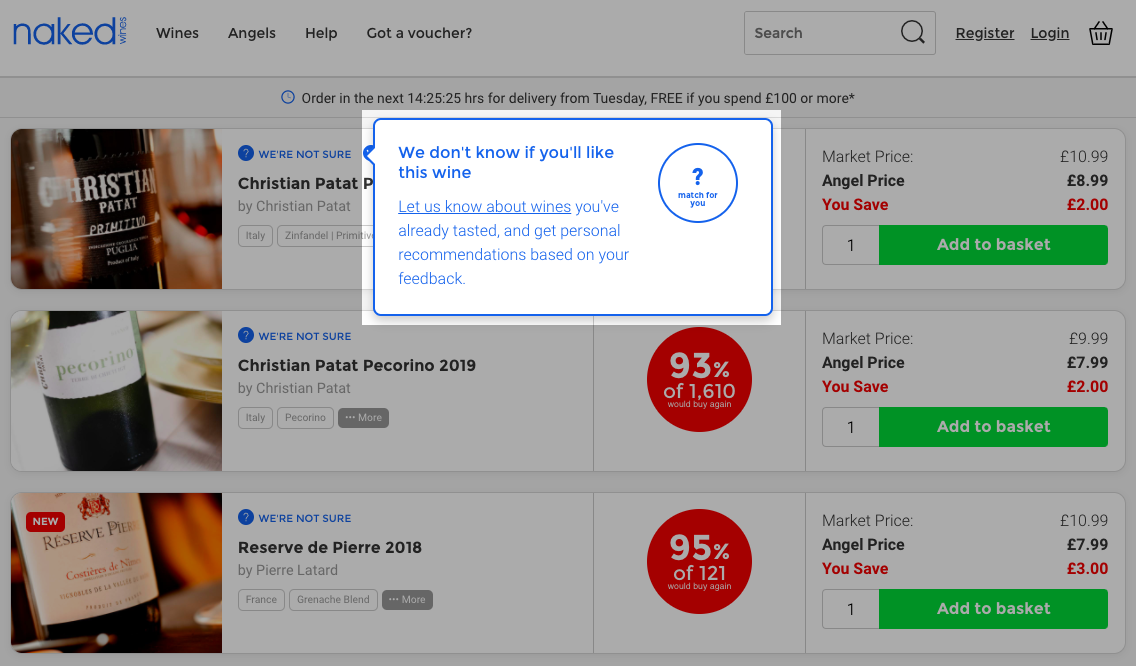
Naked Wine uses each customers’ reviews to inform their recommendation engine. As a result, customers see wine suggestions that they’ll want to buy via Naked Wine.
The brand uses a highly personalized approach to customer review, which considers consumer preferences and shopping habits.
For example, Naked Wine employs predictive analytics to recommend other wines they think consumers will love based on feedback and reviews.
In addition to providing personalized recommendations, the brand uses this feedback and customer preferences to send hyper-personalized emails to show customers other products that will interest them.
Naked Wine Results and Why They Work

Adestra used Naked Wine’s customer purchase history data to build a hyper-personalized email campaign for Naked Wine. Via Naked Wine.
The company’s hyper-personalization strategy centers on the use of predictive data to offer tailored experiences.
The result:
- Increased customer feedback and engagement
- Alignment of sales with individual customer wine preferences
- Increased sales and profits
- Improved customer satisfaction, retention, and brand loyalty
Naked Wine enjoys a loyal and growing customer base across the US, UK, Australia, and beyond. The company also works with more than 156 independent winemakers in 17 countries.
According to Naked Wine’s campaign coordinator Adestra, the following results were produced due to the use of customer data to create custom wine recommendations:
- Email engagement improved,
- Naked Wine’s sitewide conversion went up 5.2%,
- Contribution per customer saw an 8.5% boost,
- Campaign conversion rate went up 40%,
- Profit per customer increased by 7.9%, and
- Conversion to order improved by 7.2%
Naked Wines amassed 14% sales growth in 2020 so far. In addition, the company gained a 14.7% consumer contribution growth.
Lessons and Takeaway
Naked Wines shows the importance of data in providing relevant content to customers. This strategy can help you leverage feedback and customer shopping behavior to offer unique experiences tailored to each customer.
#4. VI Hyper-Personalized Workout and Fitness Goals for Its Users

With Vi’s hyper-personalization strategy, users are committed to their exercise regimen. Via Vi.
Fitness brands know that personalization is essential. But, how does one personalize fitness?
Vi is a digital fitness coach who personalizes each user’s fitness routines based on personal goals and abilities. The service’s hyper-personalization strategy gives users a fitness program unique to them.
This customization makes training even more fun and encourages users to continue exercising.
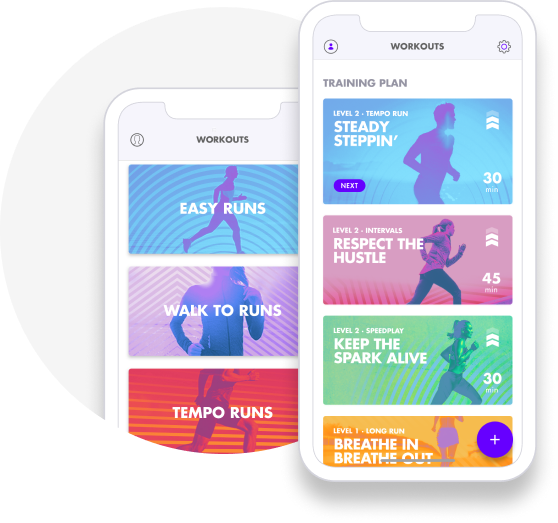
Users have access to a variety of workout routines. They’ll also have access to a step-by-step exercise plan. Via Vi.
The app works by asking you a few simple questions about your goals and fitness level and then tailors a personalized plan to help you achieve your goals.
More so, users can get:
- Real-time progress report to improve motivation
- Feedback on fitness achievements and milestones
- Rewards for consistent runners
The fitness app tracks users’ speed, workout times, and heart rate and offers personalized exercise recommendations based on this data. Users can also create virtual challenges and compete against other users.
Vi Results and Why It Works
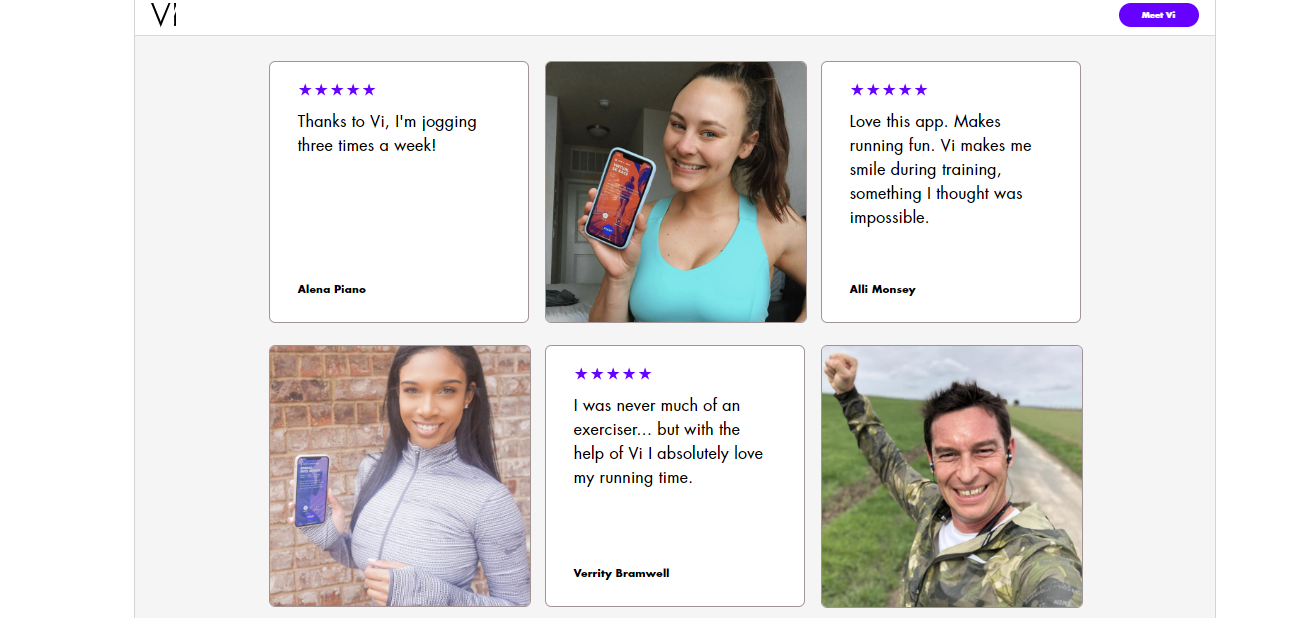
Vi’s successful hyper-personalization strategy created a better user experience and got them to commit long term. Via Vi.
Vi’s per-customer strategy has yielded positive results, and here’s why:
The fitness brand tracks users’ progress for each session, then targets them with personalized content based on their activities.
Not only that, but delivering the right information that users need at the right time has helped Vi’s growth in many ways. Some of which includes:
- Accelerate conversions
- Positive customer feedback
- Improve customer retention and loyalty
The company’s community is vibrant and growing. Users rate the app high. Vi’s users have run over a million miles with the app’s help.
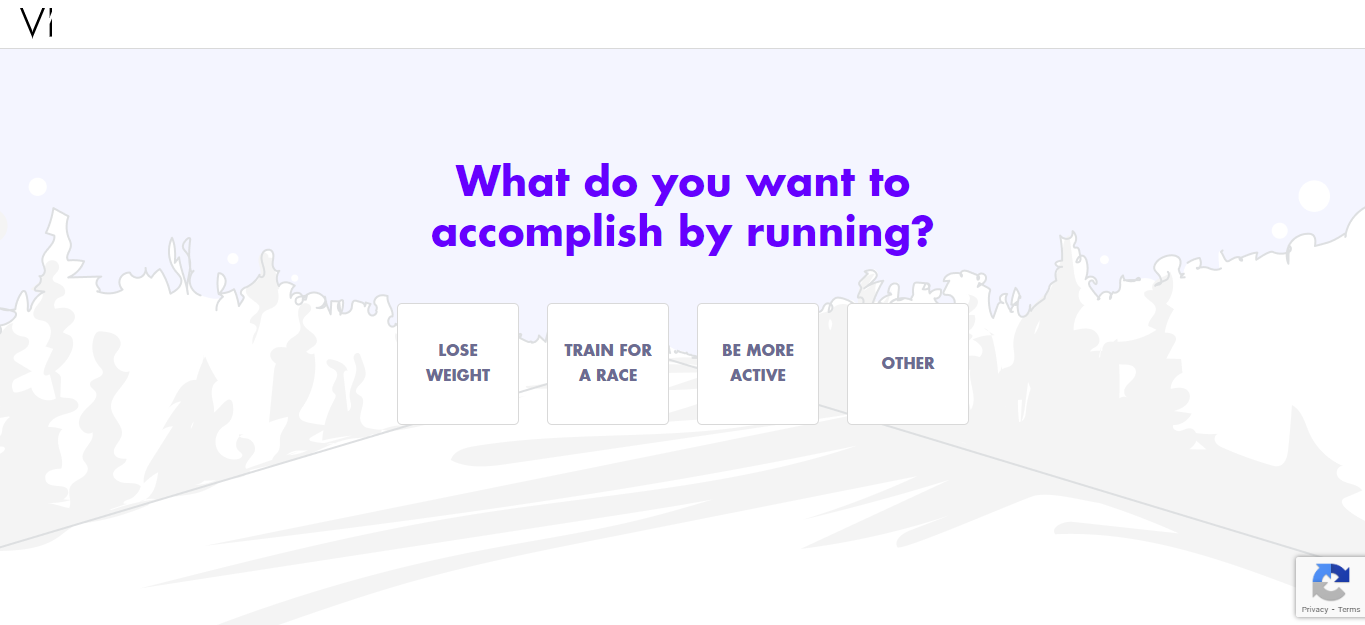
Vi helps users set hyper-personalized goals that align with the user’s interests. Via Vi.
Lessons and Takeaway
User’s get more engaged with products that let them see their performance and get instant feedback. This feedback is essential for customer engagement and loyalty.
In addition to that, Vi showed how you could use these insights from data to offer a personalized customer experience:
- Personalize customer experience across different touchpoints
- Deliver more customer-centric content
- Increase brand reputation and equity
#5. Sephora’s Hyper-Personalized Skincare and Makeup Recommendations
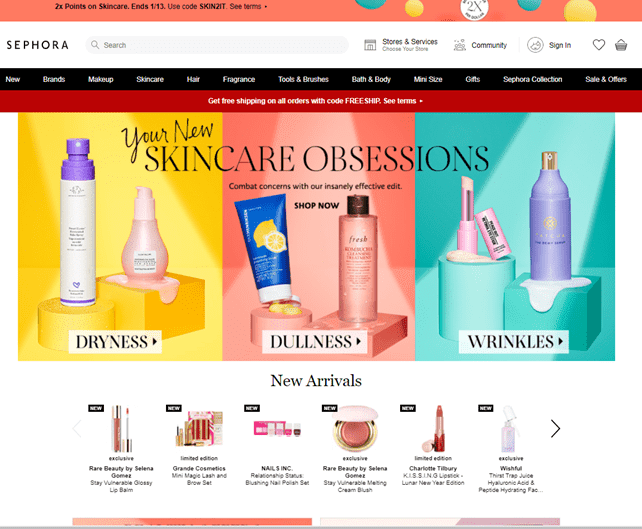
Sephora uses hyper-personalization to address users’ pain points. They offer suitable products and new arrivals based on customers’ profiles via Sephora.
Sephora launched in the 1970s and has been a changemaker in the cosmetic industry. The brand offered personalized cosmetic experiences to engage their offline and online users and provide solutions to their pain points ranging from:
- A user-friendly website that recommends products based on user’s profiles, price range, brand choice, etc.,
- Personalized beauty products that meet the user’s needs,
- New-season releases, newest arrivals, free samples, and lots more.
- In-store cosmetic assistance from industry experts,
- Complimentary makeovers,
- Makeup tutorials and classes.
These strategies helped them discover the pain points of makeup users and also helped them improve their offerings. Little wonder they stole the hearts of millennial makeup users.
Sephora’s digital platform- the Sephora Beauty Advisor- lets users browse and purchase products based on skin type, age, gender, and even specific products.
The Beauty Advisor helps you learn more about each brand and its offerings, so before trying new products, you have a heads up. In addition, it recommends similar products based on the user’s previous purchases and specific searches.
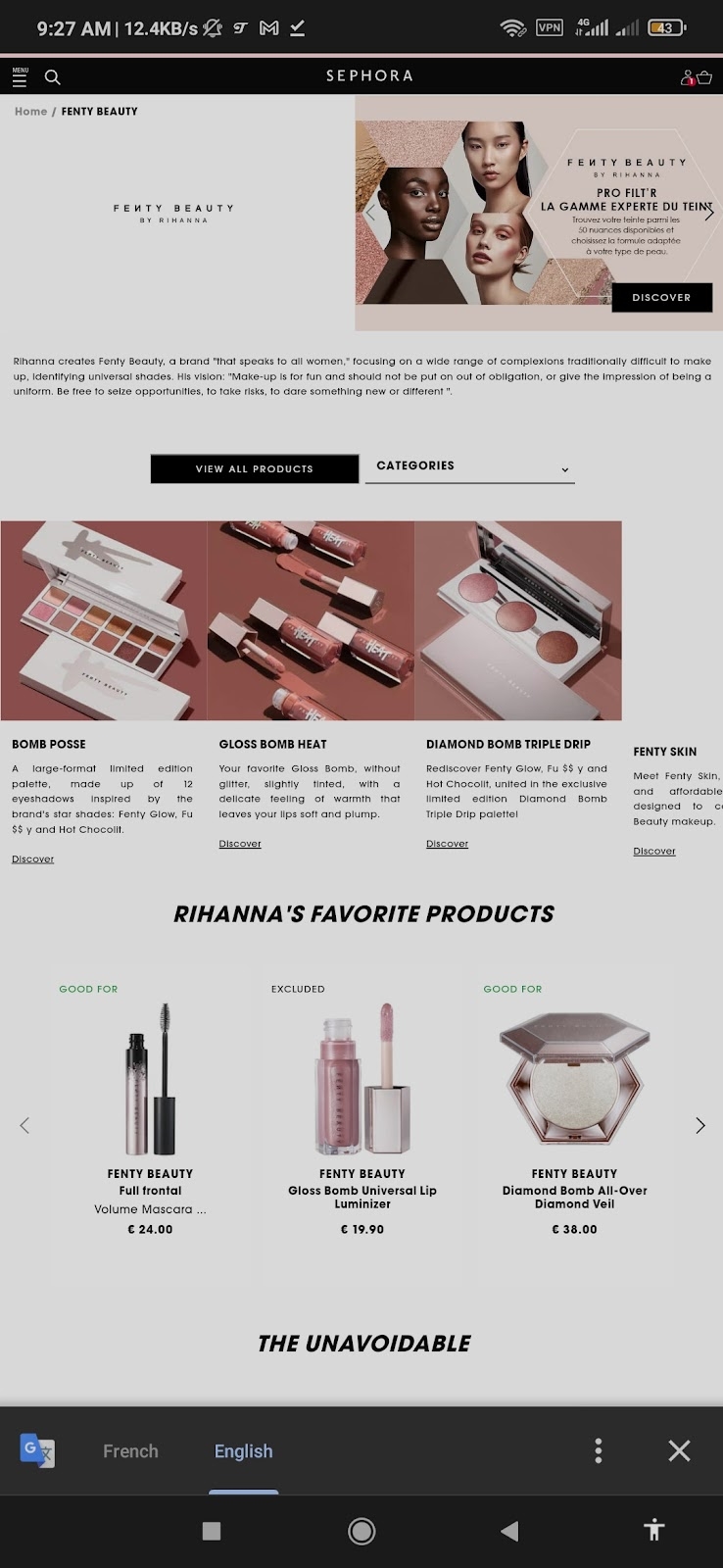
Sephora starts with helping you discover the brand and other product categories they are offering. Via Sephora.
For example, when you search for a Fenty Beauty powder, the Beauty Advisor recommends other Fenty Beauty products that you may like, based on other customers’ reviews. The Sephora mobile app also allows users to favorite products, serving as a purchase guide in their online and offline stores.
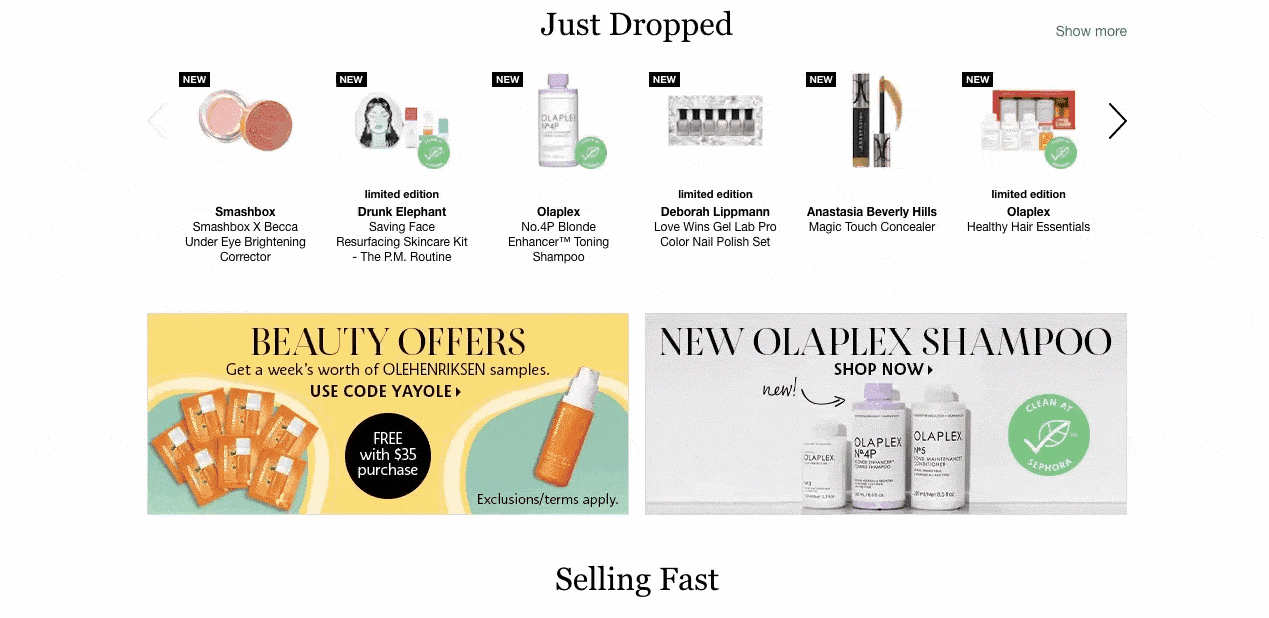
Sephora offers recommendations based on customers’ makeup selection, brand choice, and price range. Via Sephora.
Sephora’s Results and Why It Works
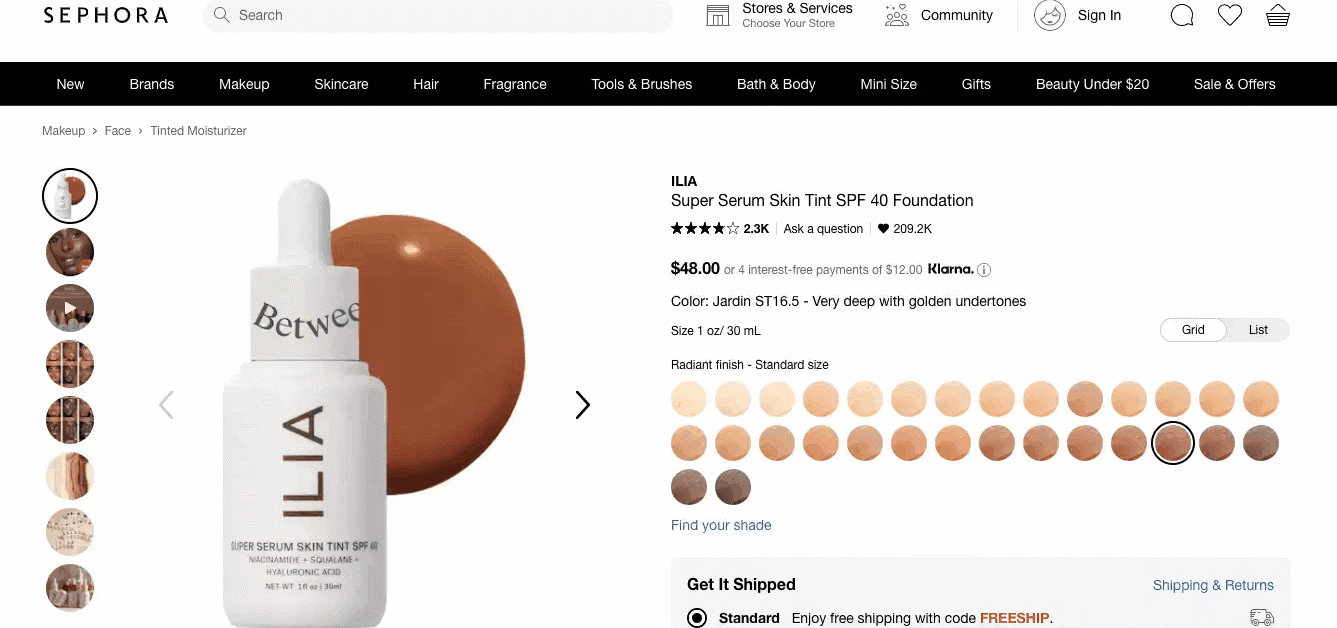
Users can choose their skin shades from products they already use, then use the results to find matching shades for new products via Sephora.
The brand leverages customer data and algorithms to create personalized experiences for its millions of users.
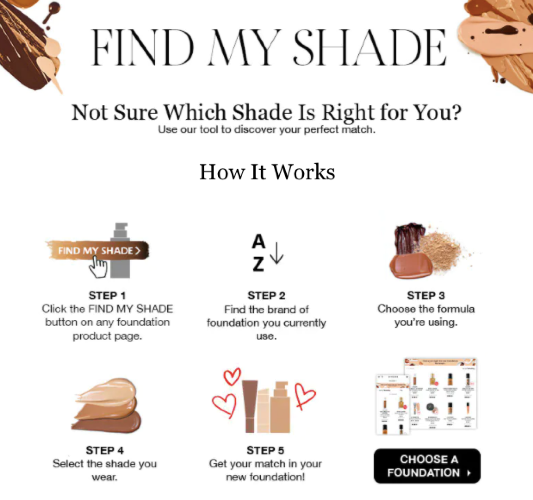
According to the first annual SailThru’s Personalization Report, Sephora ranked number one in the online survey index for 2021. The brand has also recorded over $ 5 billion in retail sales every year since 2017.
Sephora understands that the world has gone digital, and buyers have become more innovative. Therefore, they leveraged technology to fast-track sales across multiple channels. The brand enjoys a massive and loyal customer base globally, which includes:
- 5 million users on Facebook and Pinterest,
- 600,000 registered users on Apple passbook,
- 900,000 followers on Twitter,
- 2 million downloads for the mobile app,
- 20.8 million followers on Instagram,
In addition to its enormous customer base, the brand also enjoins industry trends and social media challenges to drive more traffic, engage customers, introduce new releases, and make more sales.
They use barcode scans to record and fasten in-store purchases. They also collect customer feedback across multiple channels for improved customer experience.
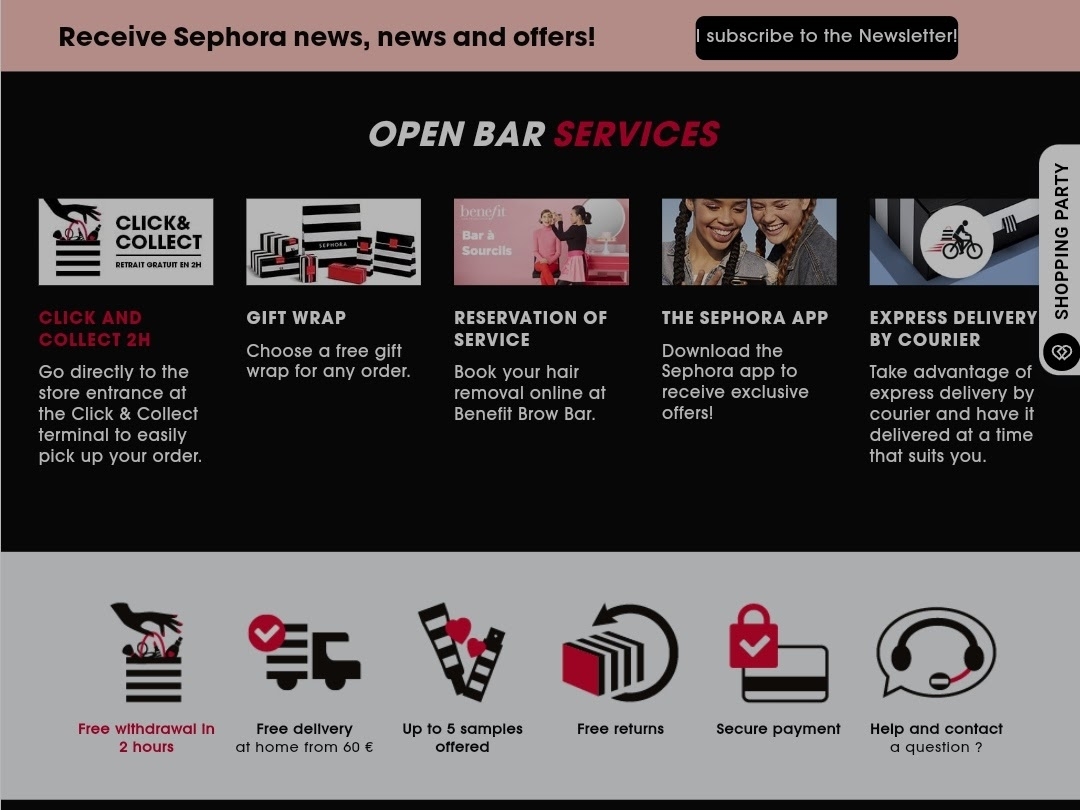
Sephora offers incentives and other open bar services to keep customers coming back. Via Sephora.
Customers who patronize the beauty brand also get other hyper-personalized services they may not know they need.
Some of the customized services include:
- Easy pick up of orders at the store entrance
- Ability to choose a gift wrap for your order
- Fast online booking reservations
- Express courier delivery at a time of your choice
- Exclusive in-app offers
Lessons and Takeaway
Providing human touch goes a long way in marketing. However, Hyper-personalization isn’t just about promoting your brand through a personal, relatable voice. Instead, it’s about delivering value to your audience in a way that makes them feel “seen” and heard.
Sephora goes above and beyond to deliver these values to their customers through:
- Personalizing customer experiences across multiple channels.
- Collecting customer feedback to provide more customer-centric offerings.
- Leveraging customer data and digital solutions to move with market trends.
Warning: Execute Hyper-Personalize with Caution
Businesses that successfully implement personalization technology see rewards in higher engagement rates, stronger brand loyalty, and higher conversion rates.
However, hyper-personalization strategies can harm your business when done wrongly, as there is a small line between engaging customers and bugging them. This is why you need a weekly report to monitor growth.
For instance, some consumers are very privacy-conscious. So you may have to do the extra work of getting them to open up or find customers who want your service.
Hyper-personalization strategies that come off as spying may lead to negative words of mouth and customer churn. Also, using customer data without authorization depicts a violation of their privacy.
That said, it is best to keep your data fresh and updated. Clean out your databases to get rid of inaccurate data. If your database has incorrect data, personalization efforts may appear insensitive and annoying.
For brands to achieve successful results, they must:
- Create a realistic hyper-personalization strategy,
- Gather and analyze customer data from multiple sources and constantly update them.
- Use AB testing for personalization campaigns to know what works and what doesn’t, and
- Collect and use customer feedback to improve products and services.
Finally, Hyper-personalization isn’t a one-size-fits-all marketing strategy. Instead, it requires stellar marketing techniques, technology-backed solutions, and flawless implementation to achieve the best results.
Digital & Social Articles on Business 2 Community
(59)
